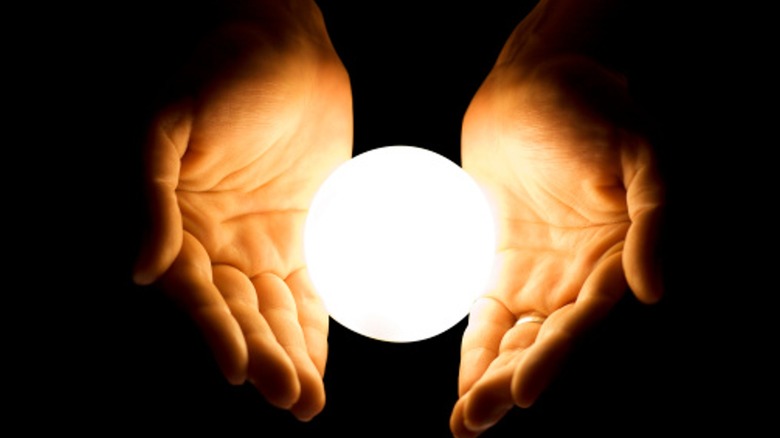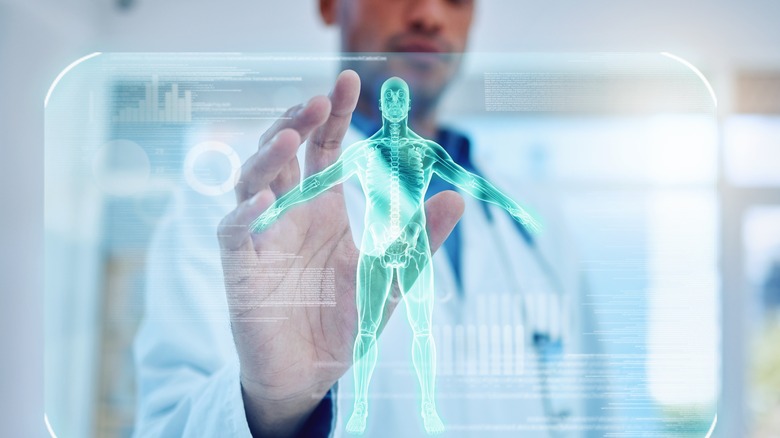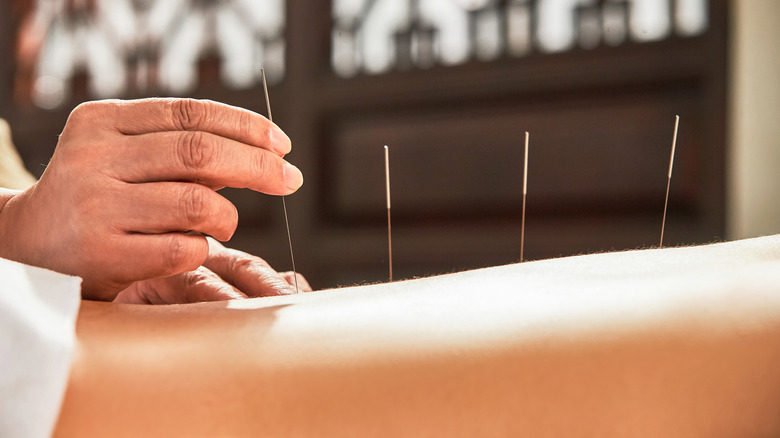Turns Out Humans Can Actually Glow In The Dark
Of all the things that glow in the dark — fireflies, glow sticks, or maybe even some of your favorite hard candies — the human body is certainly not one of them, is it?
If you've ever stepped under a black light, you probably noticed your teeth suddenly shining bright like a light bulb. That's because our teeth harbor substances known as phosphors (via Wonderopolis). When stimulated by UV light exposure from a black light, phosphors radiate a light of their own, giving our teeth a luminescent appearance. Research has shown, however, that our teeth may not be the only area of the human body that can glow — even without a black light present.
The answer lies in human bioluminescence, a bodily process traditionally thought of in association with ocean-dwelling animals, according to a 2021 article published in ResearchGate. Bioluminescence is a process in which the body of a living creature gives off light through photon emission. Unlike the vivid glow of a glow-worm or angler fish, however, the strength of light that emanates from our skin is too weak to be detected by the human eye alone.
The human body gives off more light at certain times of day
While the strength of photon emission from the human body is 1000 times weaker than what we can pick up on with the naked eye, researchers from a 2009 study published in PLOS ONE found that the human body glimmers more strongly at certain times of day than others.
Over the course of three days, five young adult male volunteers were photographed shirtless by a photon-sensitive camera while sitting in a dark room. Measurements were taken every three hours during waking hours for a period of 20 minutes. The study findings showed that the human body gave off the greatest amount of light from the face, particularly from the cheeks and around the mouth. Furthermore, the research revealed that the human body glows at its weakest in the morning, more intensely in the afternoon, and hits its peak photon emission in the late afternoon.
Thought to be connected with the natural waves of the body's metabolism, a researcher from the study Hitoshi Okamura told NBC News that such images could help in diagnosing patient health issues, as indicated by weaker spots of photon emission.
Human photon emissions may change in response to acupuncture and meditation
In a 2019 research paper published in Global Advances in Health and Medicine, the researchers outlined a summary of prior studies, as well as more recent developments, involving ultraweak photon emissions and how the information relates to practices in Western medicine and traditional Chinese Medicine practices.
In re-examining past studies published in Chinese scientific journals, recent imaging technology has confirmed that photon emission from human fingertips appears to increase as a person grows older as well as with disease progression. While results may vary by gender, ultraweak photon emissions were found to decrease in response to acupuncture treatment. Similarly, a 2020 case study published in Open Access Text was designed to analyze whether acupuncture treatment could prompt changes in human photon emissions within a period of 30 minutes. Using hyperspectral imaging technology, it was found that photon flow actually increased within the area of the body receiving needle insertion. Some research also suggests that human photon emission can potentially be affected by meditation. Although more research is needed, the study team theorized that meditation may influence free radical activity, which is thought to play a role in human bioluminescence.



